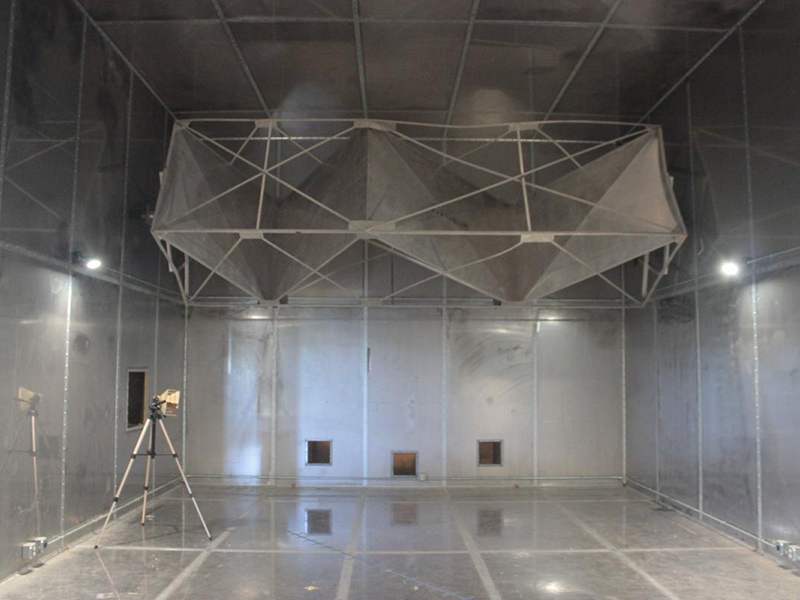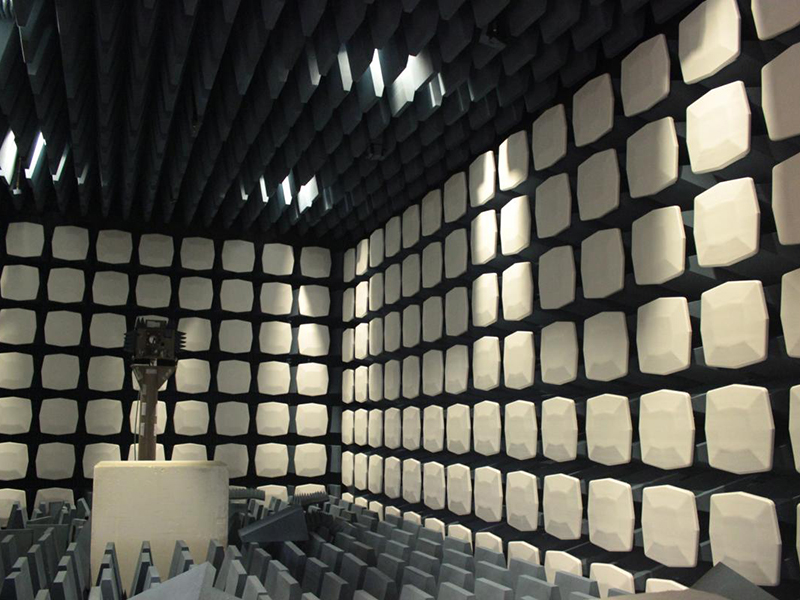Research
Experimental Facilities
Reverberation Chamber
The reverberation chamber is an ETS-Lindgren SMART-80 providing a reliable test and
research platform from 80 MHz to 18GHz. The reverberation chamber approach is especially
useful for measuring the susceptibility level of equipment under test by exposing
the equipment in the unique field environment of the chamber. The total radiated power
of devices can also be measured during an emission test, without the need to rotate
the object, scan antenna, change polarity or lay cables in any particular orientation.
The reverberation chamber is also useful to evaluate the relative performance of
different designs of the same device.
The SMART 80 is primarily designed for testing in accordance with standards: DO160G,
MIL-STD-461E, and IEC 61000-4-21 from 80 MHz to above 18 GHz. Although primarily
intended to create an electromagnetic environment (EME) for electromagnetic compatibility
(EMC) assessment of immunity and emissions the reverberation chamber is also useful
in the assessment of communication system performance in a wide range of channel characteristics.
The internal dimensions of the SMART 80 reverberation chamber are: 44’ x 20’ x 16’. These dimensions are particularly useful for the large working volumes needed to assess EMC and communication performance of large devices. With a wide selection of signal generators, network analyzers, and spectrum analyzers, we are able to validate designs for antennas and other RF devices to precise standards.
Anechoic Chamber
The Anechoic chamber is a 8.5m fully anechoic chamber (FALC) with a 2 m turntable adjacent to the reverberation chamber with test frequency capabilities from 30 MHz to 18 GHz. The FALC is useful in determining the directional emissions spectrum from the UAS and all of its sensors. Example applications include shielding effectiveness of devices, antenna pattern and radar cross section (RCS) measurements.
Computational
The REFTAS lab develops its own computational software to allow researchers the ability to experiment with new techniques without the need to interface with an external computational product developer. This grants the REFTAS lab a greater agility to experiment with new modeling techniques, and work alongside the experiential component of the REFTAS lab to preform validation as required.
These internal programs solve electromagnetic problems using FEM, 3D Models/MoM, and MLFMA.
Commercial Software
In addition to internal computational software, the REFTAS lab has the following commercial software available:
- SuperNEC (MoM)
- EZ-EMC (FDTD)
- WinFEKO (MoM with AWE)
- COMSOL Multiphysics
- COSMOS (geometry modeling)
- Sonnet
- Advanced Design System by Agilent


